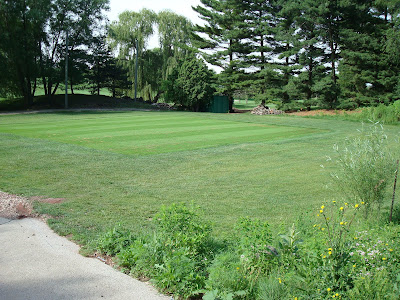Some of the superintendents that check in may like to see this. Sometimes when mixing products to spray, some of those products do not get along. That happened on Monday when we tried to spray fairways. We were pushing our luck a little-I believe we used the line, "we haven't seen any problems yet" before adding another product to the mix. When we mix products we use a 90 gallon mix tank with an aggressive agitation to mix the products together before pumping the solution into the spray tank. I dissolved 3 different fertilizers, then added a liquid product to the tank, and this is what I got out of it. It was amazing to witness how fast the entire mix (about 70 gallons) "gelled" up. The consistency of the mix turned from liquid to "mashed potatoes" in about 10 seconds. We decided to remove a couple of fertilizers from the mix, then mixed directly into the sprayer to begin with the fairways.
I was most surprised when I decided to shovel some out a couple of hours later while waiting on the fairway mowers in front of me. It had all returned to liquid!
I was most surprised when I decided to shovel some out a couple of hours later while waiting on the fairway mowers in front of me. It had all returned to liquid!












































